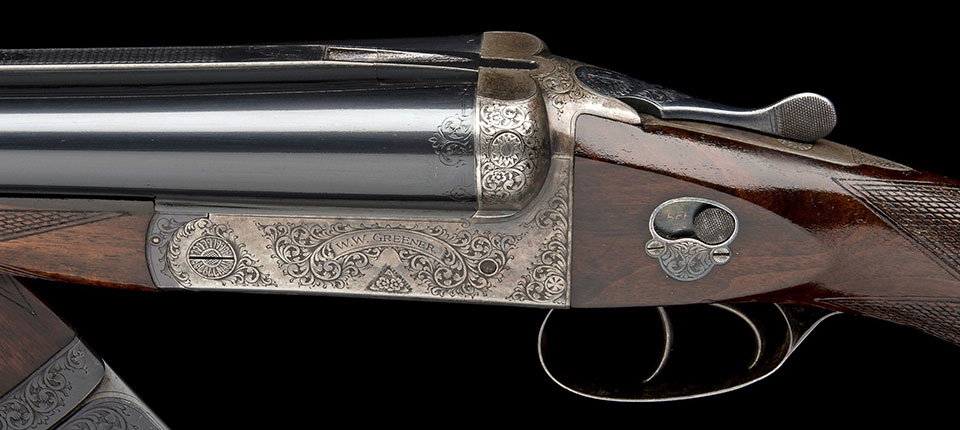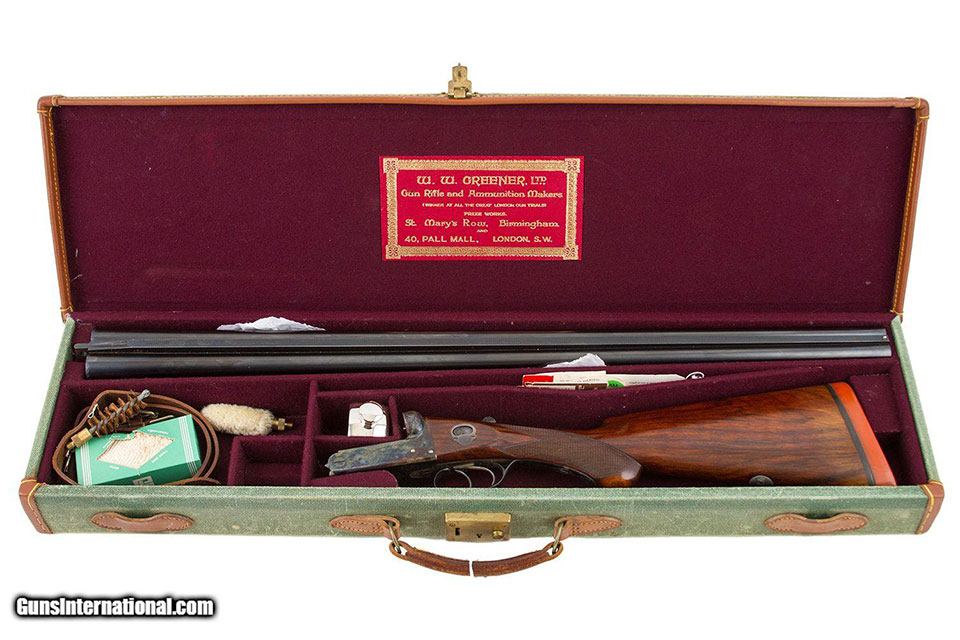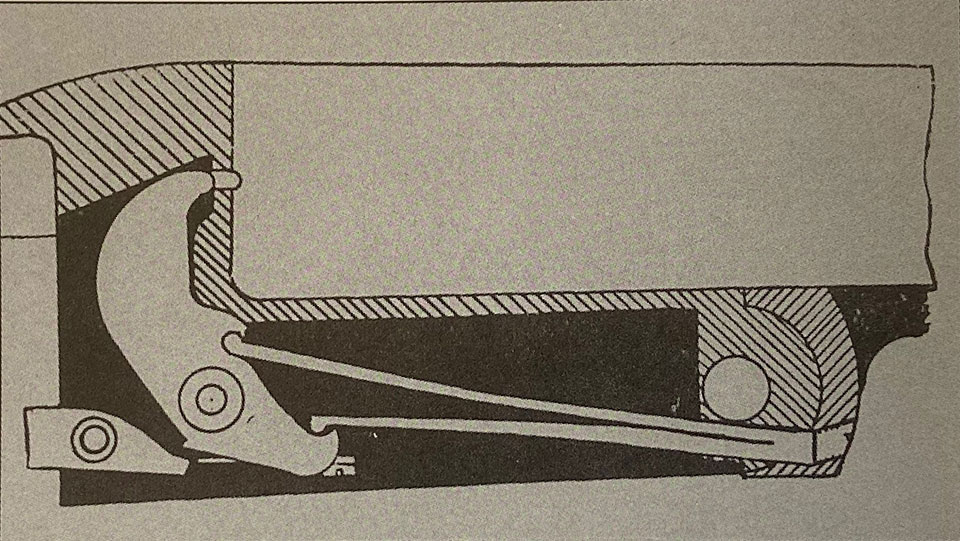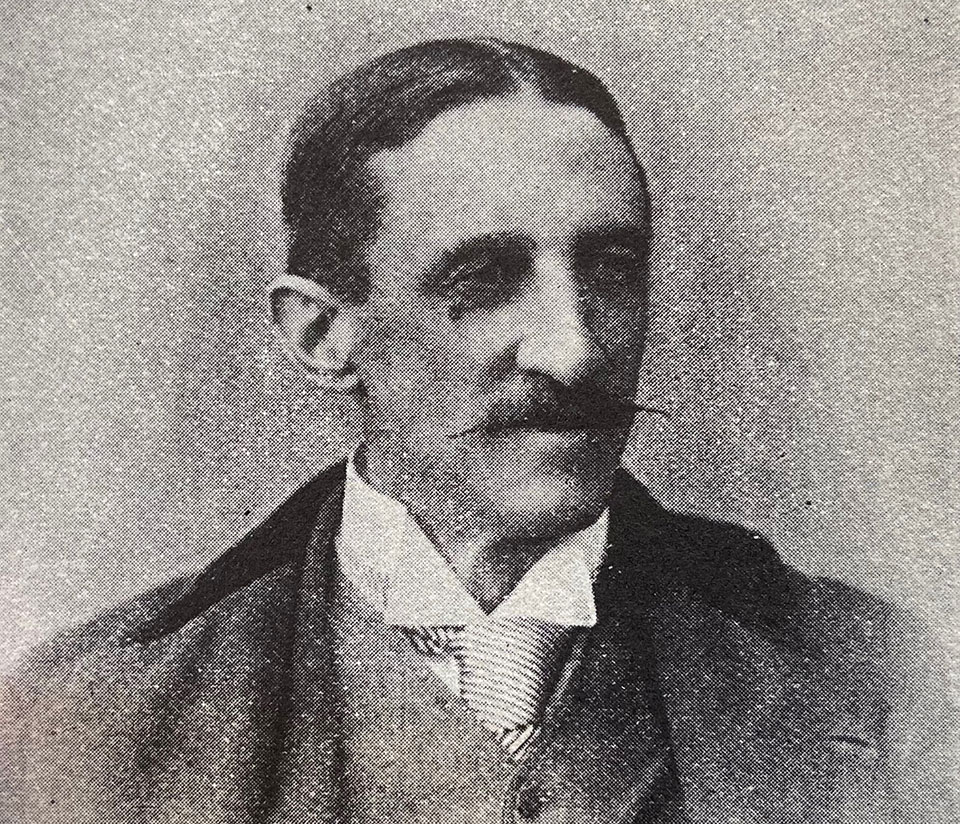Boxlock non-ejectors, the mainstay of the rough shooter for over a century, are in little demand these days and are difficult to sell. Similarly their upmarket cousin, the boxlock ejector is also out of fashion as the banal Beretta continues to impress with function but as for form?
But if you can find certain unusual boxlocks they still command very high prices. I am thinking of such guns like Harkom of Edinburgh’s very individual boxlocks with gold washed internals, or Holland & Holland’s Aero Gun originally designed for shooting down Zeppelins. To this can be added the Greener Blue Rock pigeon gun.
The Greener Blue Rock pigeon gun was a variation of their popular Empire model designed specifically for either live pigeon shooting on the Continent or trap shooting. Greener Empire guns were made in their thousands but the Blue Rock model was made in only small quantities. This rarity combined with the excellent quality of the gun and its suitability for the current fashion for high pheasants makes it a highly sought after gun, hence the high prices they achieve.

W.W. Greener liked to make all his firearms as simple as possible; with fewer parts there was less to go wrong, very important in the large export trade he had created. With this in mind he introduced the Emperor boxlock model in 1894, a gun that had only three parts in the lock, the simplest action devised up to this date.
However what W.W. Greener and his son Harry were really aiming for was a simple gun that could be produced virtually entirely by machinery thereby reducing costs. The result was the Empire boxlock patented by Harry Greener in patent no. 12012 in 1910. It had the same number of lock parts as the Emperor but unlike the Emperor had a conventional V shaped mainspring with its apex protruding through the knuckle. When the barrels were lowered, the fore-end iron acted against the mainspring and pushed it backwards to cock the tumbler.
The result was a triumph for Greeners, a very good quality strong gun, simple and easy to maintain and above all relatively cheap. The first Empire grade E10 appeared in 1910 costing 10 gns. and from then on they were sold in their thousands. The early Empires were all non-ejectors with long 3” actions known as “Long Empires”. In 1925 a shorter action was introduced, this model being known as the “Short Empire”. Late an ejector version was offered, usually of the Southgate variety. Between 1910 until the Webley takeover in 1965, some 17,000 Empires were built.
It was a relatively simple matter to offer a variation on the Empire and Greeners modified it to create a specific pigeon gun for live pigeon shooters on the Continent of Europe and for trap shooting. In a very clever marketing exercise, Greeners named this gun the “Blue Rock” pigeon gun after the type of pigeon used in live pigeon shooting. The name caught the era perfectly and all Blue Rock pigeon guns have such a pigeon engraved upon the top rib.
The Blue Rock was either an E25 or E35 gun and was available as either a non-ejector or ejector. It was a medium grade gun and was sold for 25gns pre World War Two and 35gns. post war.
It was a typical pigeon gun, quite heavy weighing in at 7 ¾ lbs. The barrels had 2 ¾” chambers and were proved for 1 ¼ oz. of shot, the maximum permissible in live pigeon competitions. When originally made, both barrels were heavily choked, invariably full choke in both barrels. This specification explains why Blue Rock guns, particularly the ejector versions are in so much demand for high pheasant shooting today.
The Blue Rock gun shown is no. 77818, a late built example dating from 1955. It has 30” barrels with a matt file cut top rib engraved “W.W. Greener, Maker, 40 Pall Mall, London, Works, Birmingham”. A Blue Rock pigeon is engraved on the top rib. Unusually the breeches are fluted at the top for better vision over the breeches. The barrels have 2 ¾” chambers and both are bored ¾ choke. It has a treble grip action due to the large loads that would be put through the gun. In common with many pigeon gun the safety is manual only. It weighs 7 ¾ lbs. and like all Blue Rock guns is of excellent quality, nicely scroll engraved on either side of the action.
Live pigeon shooting was banned as long ago as 1921 in Great Britain but the practice still continued on the Continent of Europe, no doubt where this gun spent most of its life. It is gratifying that this gun, although built for a use not pertinent today will have a new lease of life among the copses and woods not foreseen in its original manufacture.

The Empire Patent 1910
W.W. Greener’s intention in gun design was to build a gun composed of a few simple strong parts. His son Harry Greener continued this tradition and in patent no. 12012 of 1910 created the Empire boxlock utilising just three parts, a tumbler, a sear and a spring.
The spring is ingenious, being both a cocking device and a mainspring. It is a V spring with the upper limb longer than the lower. After the gun is fired, the forward end of the mainspring projects forwards slightly through the knuckle. As the barrels open, the fore-end iron forces back the mainspring and as it moves backwards, the upper limb rotates the tumbler to full cock. In so doing the bottom of the tumbler rises and compresses the spring.

The mechanism was simple and robust and with so few parts was very reliable. It is no wonder that from the first gun built in 1910 to the last in 1965, over 17,000 were built and a reliable reputation created.
The Blue Rock Pigeon
The type of pigeon used in live pigeon shooting was the variety known as the Blue Rock pigeon. The best variety was known as the Lincolnshire Tin Blue Rock. They were fed in Lincolnshire by farmers in the winter time who also built dovecots for them. Other Blue Rocks were bred in Oxfordshire specifically for live pigeon shooting.
A great many Blue Rocks were also bred in Antwerp for use in the Continent and W.W. Greener writing in his book The Gun And its Development, 1884 edition, stated with just a hint of jingoism “They possess none of that gameness peculiar to the English bird”.
At some of the large and permanent live pigeon grounds such as at Monaco, large dovecotes were erected and many birds were bred at the grounds to save on transportation costs.
All four sides of the traps were hinged so that upon the cord being pulled, the trap collapsed entirely leaving the pigeon in the open. Of course the pigeon could then fly off in any direction compared to clay pigeon shooting, one factor in its popularity. It was important that pigeons intended for trap shooting should not become used to being handled to keep them wild and at all the clubs there were stringent rules in force against any mistreatment of birds.
Pigeon Shooting On The Continent
During the late 19th century there had been a growing disquiet about the practice of live pigeon shooting particularly as it was a sport driven by gambling. With the Captive Birds Act of 1921 live pigeon shooting was banned in Great Britain but it still flourished on the Continent of Europe.
It was very popular in several countries such as France, Switzerland, Germany, Belgium Monaco, Italy etc and many of the big challenge matches were very much on the social calendar of the day. In France the leading pigeon shooting ground was the Cercle des Patineurs situated in the Bois de Boulogne.
Pigeon shooting was particularly popular in Monaco and the International Concours was held there during January and February. This competition attracted the best shots of all the nations including many English and American shooters and the prizes offered were valuable such as rare works of art.
Charges in pigeon guns were limited. The maximum powder load was 4 drams of powder and the maximum shot load 1 ¼ oz. In a sport dominated by money and gambling, as might be expected, there were a plethora of rules covering every eventuality, but one rule out of the myriad I particularly liked stated “It is forbidden to shoot both barrels at the same time”.

Published by Vintage Guns Ltd on (modified )




